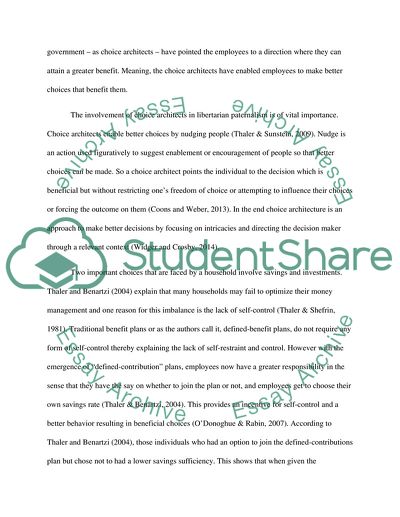Cite this document
(“The Concept of Choice Architecture Essay Example | Topics and Well Written Essays - 1750 words”, n.d.)
The Concept of Choice Architecture Essay Example | Topics and Well Written Essays - 1750 words. Retrieved from https://studentshare.org/architecture/1673327-6critically-evaluate-the-concept-of-choice-architecture-and-the-save-more-tomorrow-schemes-adopted-in-the-us-and-the-uk
The Concept of Choice Architecture Essay Example | Topics and Well Written Essays - 1750 words. Retrieved from https://studentshare.org/architecture/1673327-6critically-evaluate-the-concept-of-choice-architecture-and-the-save-more-tomorrow-schemes-adopted-in-the-us-and-the-uk
(The Concept of Choice Architecture Essay Example | Topics and Well Written Essays - 1750 Words)
The Concept of Choice Architecture Essay Example | Topics and Well Written Essays - 1750 Words. https://studentshare.org/architecture/1673327-6critically-evaluate-the-concept-of-choice-architecture-and-the-save-more-tomorrow-schemes-adopted-in-the-us-and-the-uk.
The Concept of Choice Architecture Essay Example | Topics and Well Written Essays - 1750 Words. https://studentshare.org/architecture/1673327-6critically-evaluate-the-concept-of-choice-architecture-and-the-save-more-tomorrow-schemes-adopted-in-the-us-and-the-uk.
“The Concept of Choice Architecture Essay Example | Topics and Well Written Essays - 1750 Words”, n.d. https://studentshare.org/architecture/1673327-6critically-evaluate-the-concept-of-choice-architecture-and-the-save-more-tomorrow-schemes-adopted-in-the-us-and-the-uk.


